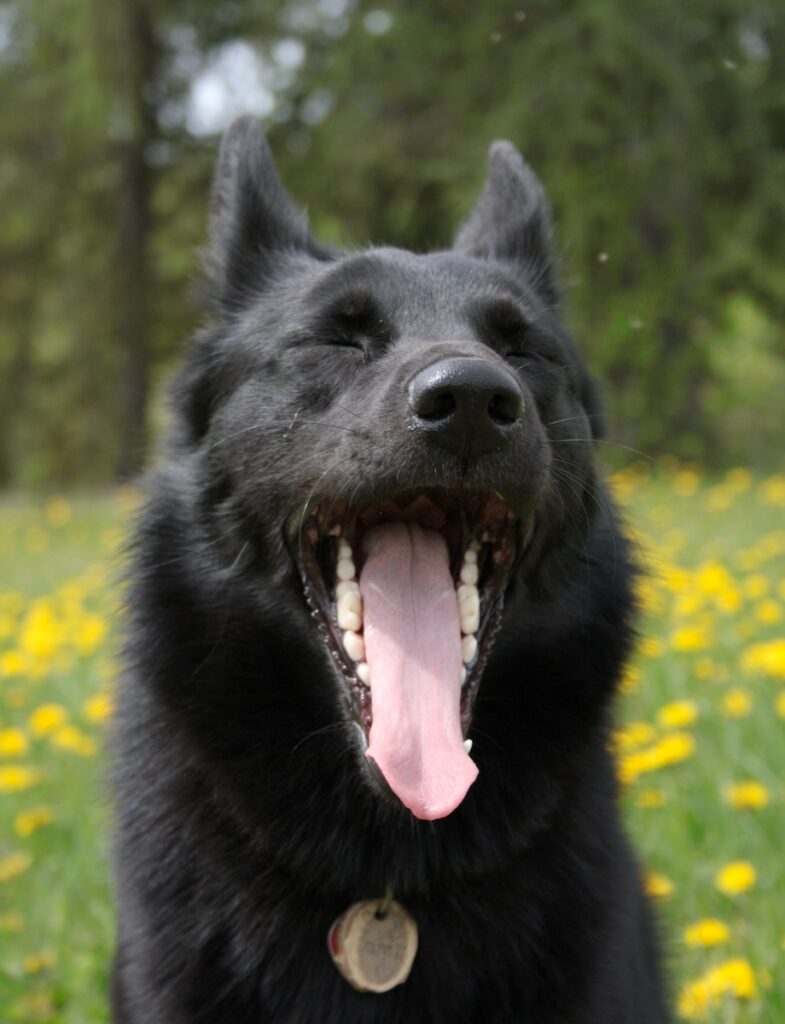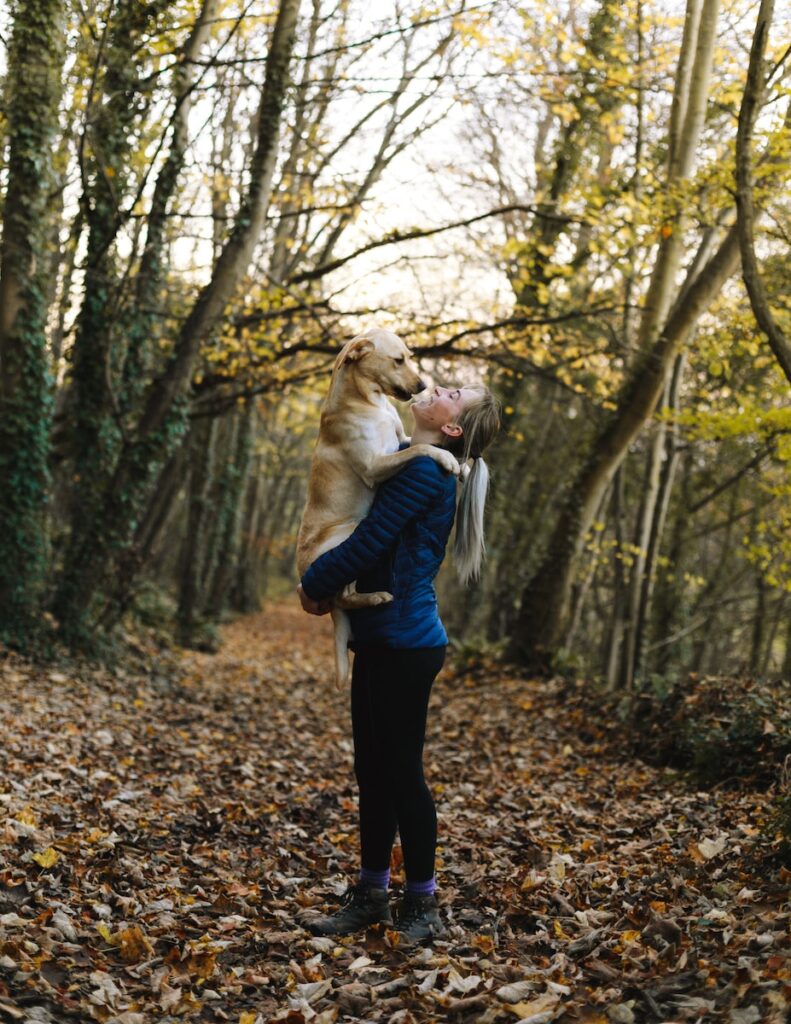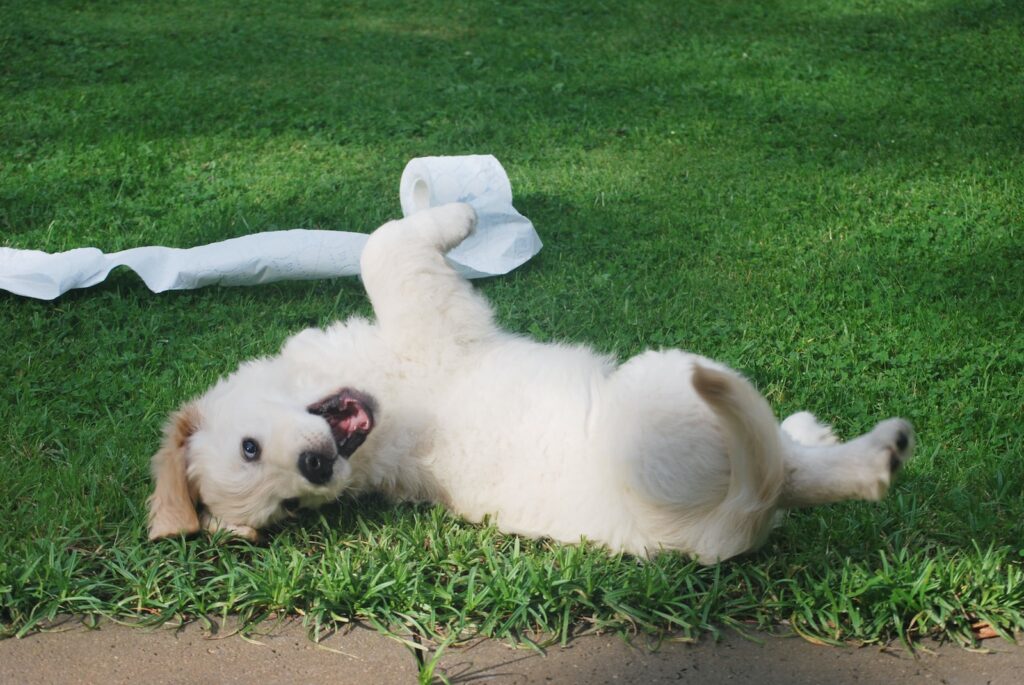Our canine companions come in all shapes and sizes, with personalities as diverse as the colors of the rainbow. Some dogs are exuberant social butterflies, while others may find the world a bit overwhelming. Understanding the importance of dog training for anxiety is necessary in ensuring that your canine lives a happy life. Anxiety in dogs can manifest in various ways, from fear of strangers to noisy vacuum cleaners. However, with patience and the right approach to dog training for anxiety, you can help your beloved pet come out of their shell and lead a more relaxed, confident life.
Also – if you want to get a professional involved, I recommend Adrienne Farricelli’s “Brain Training For Dogs” program.
It’s a great program that really offers a deep dive so that you’ll be able to understand the why, as well as the how, of dog training so check it out.
Understanding Your Dog’s Emotional State
A dog’s emotional state plays a crucial role in training for anxiety. When a dog is anxious, their focus shifts to the source of their fear, making it difficult for them to pay attention to training. This is why training an anxious dog can be a real challenge. In such moments, the dog isn’t interested in treats or play, as fear can cause them to shut down, making it difficult for cognitive connections to form.
Instead of attempting to train an anxious dog during these moments, it’s important to respect your dog’s feelings. Focus on removing them from the anxiety-inducing situation or modifying it to help your dog cope. As a responsible pet owner, your dog’s emotional well-being should always be a priority. Even if it seems impolite to walk away from a situation, putting your dog’s emotional needs first is essential. Training for anxiety can wait until your dog is in a calmer emotional state.

Recognizing Your Dog’s Anxiety
Dogs, like people, can struggle with anxiety, and it’s important to identify the signs. Anxiety can be manifested in various ways, including:
- Excessive Panting: Anxious dogs may pant more than usual, often due to nervousness or stress.
- Excessive Barking or Whining: Anxiety can lead to heightened vocalization. If your dog starts barking or whining more than usual, it’s essential to investigate the cause.
- Destructive Behavior: When anxious, dogs may resort to chewing on furniture, shoes, or other objects as a coping mechanism.
- Withdrawal: Dogs may withdraw from social interactions when anxious, seeking solitude as a way to cope with their fears.
- Pacing or Restlessness: Unusual restlessness and excessive pacing are signs of anxiety.

Early Warning Signs of Anxiety and Fear
To help your dog avoid situations that trigger their fears, it’s crucial to be attuned to canine body language. Recognizing early warning signs of anxiety and fear allows you to intervene before your dog becomes overwhelmed. Pay close attention to how your dog reacts to different situations to identify their triggers.
While some signs of fear, like cowering, shaking, or running away, are apparent, it’s better to prevent things from reaching that stage. Look out for less obvious signs that your dog is uncomfortable:
- Yawning: Dogs may yawn to express emotional discomfort, not boredom.
- Disinterest: If your dog ignores treats or toys they usually enjoy, anxiety may have taken hold.
- Panting: Whether cooling off or experiencing stress, panting can be a sign of anxiety.
- Sniffing the Ground: Anxious dogs often engage in displacement behaviors like sniffing, attempting to distract themselves from their triggers.
- Growling or Lunging: Some dogs respond to fear by adopting an aggressive stance, which is often rooted in fear.
When you observe these signs, it’s time to focus on building your dog’s confidence and helping them face their fears in a safe and positive manner. For professional guidance on a confidence-building program tailored to your dog’s needs, consult a certified dog trainer or an animal behaviorist.

Building Confidence in Your Dog
Whether your dog’s anxiety arises from past trauma or a lack of socialization, you can make substantial progress in helping them confront their fears. While your dog’s personality may not undergo a complete transformation, they can become more at ease in the world, resulting in a happier and more relaxed dog.
Here are several strategies to boost your dog’s confidence:
- Provide a Reliable Routine: A consistent routine can make your dog’s world more predictable, providing comfort and security.
- Teach Basic Obedience Behaviors: Teaching your dog basic commands like “sit,” “stay,” and “come” enhances their sense of security and trust.
- Use Behavior to Earn Rewards: Request that your dog demonstrates these behaviors to earn life rewards, offering them a sense of control over their environment. For instance, ask for a “sit” before placing their food dish or a “down” command before allowing them into the yard.

Desensitization to Canine Anxiety
You can also build your dog’s confidence by addressing their specific triggers. The key is to create positive associations for your dog with the things that trigger their anxiety. However, what should you do when your dog won’t eat or play in the presence of these triggers? The solution is to expose your dog to these triggers at a level where they don’t react, also known as keeping them below their threshold.
Once your dog is below their threshold, pair this exposure with something they love, like tasty treats. As your dog becomes comfortable at that distance from the trigger, gradually increase the intensity while continuing to provide treats. Over time, work your way up to a full-blown situation. This method, known as desensitization and counterconditioning, may be time-consuming, but it’s remarkably effective in helping your dog overcome anxiety and gain confidence.
By implementing these strategies and focusing on dog training for anxiety, you can provide your furry friend with the support and guidance they need to live a happier, more confident life. Patience and consistency are your greatest allies with dog training for anxiety.
Training Tips for Eliminating Your Dog’s Anxiety
Once your dog has gained newfound confidence, you can expand your training horizons and introduce them to more situations and distractions. However, during this transitional phase, teaching new behaviors can be a bit challenging. The following training tips will assist you in this process:
Embrace Positive Training Methods:
Focus on using positive reinforcement techniques exclusively. When your dog displays unwanted behavior, it’s more effective to ignore or redirect them rather than resorting to punishment. Using rewards, such as treats or praise, will motivate your dog to establish positive associations with the training process.
Practice Patience:
It’s essential to set realistic expectations for your anxious dog. For instance, if your dog feels nervous in a group training class, consider switching to private lessons or simply listen to the instructions and wait to practice at home. Patience is key when working with a fearful dog.

Respect Your Dog’s Pace:
Keep in mind that fear can interfere with the learning process. Your dog might need more time than expected to master new behaviors. Be patient and allow them to progress at their own speed.
Teach Nose Targeting:
One effective and enjoyable behavior to teach your dog is “nose targeting.” This skill can be used to encourage your dog to approach new people or other dogs, making it a valuable tool for redirecting and distracting them from their triggers.
With these training tips in your toolkit, you can support your dog on their journey to becoming a more confident and relaxed companion. Remember that every dog is unique, and the key to success lies in patience, positivity, and understanding.
Do you have an anxious dog? Leave a comment below!

